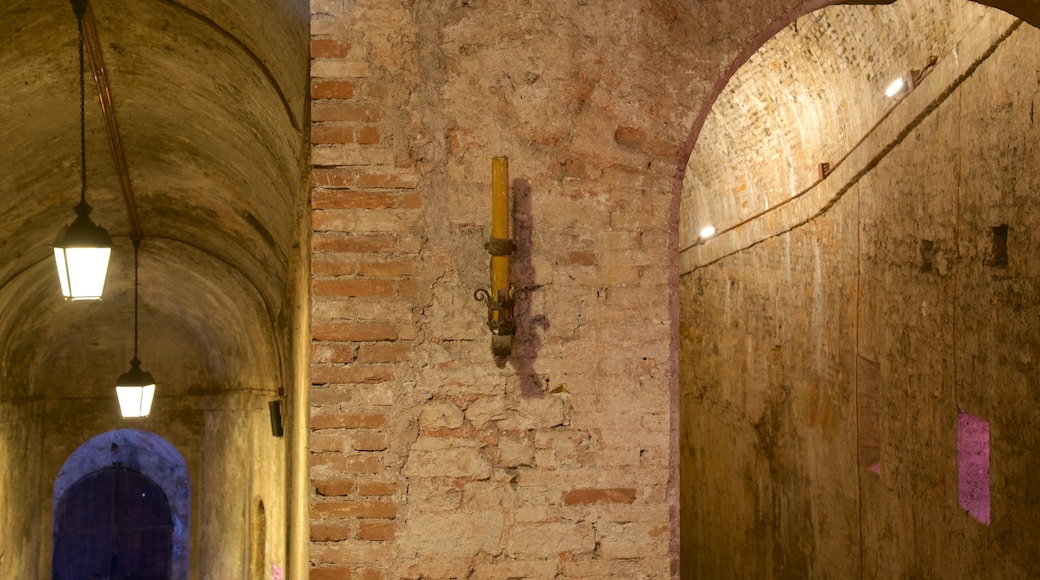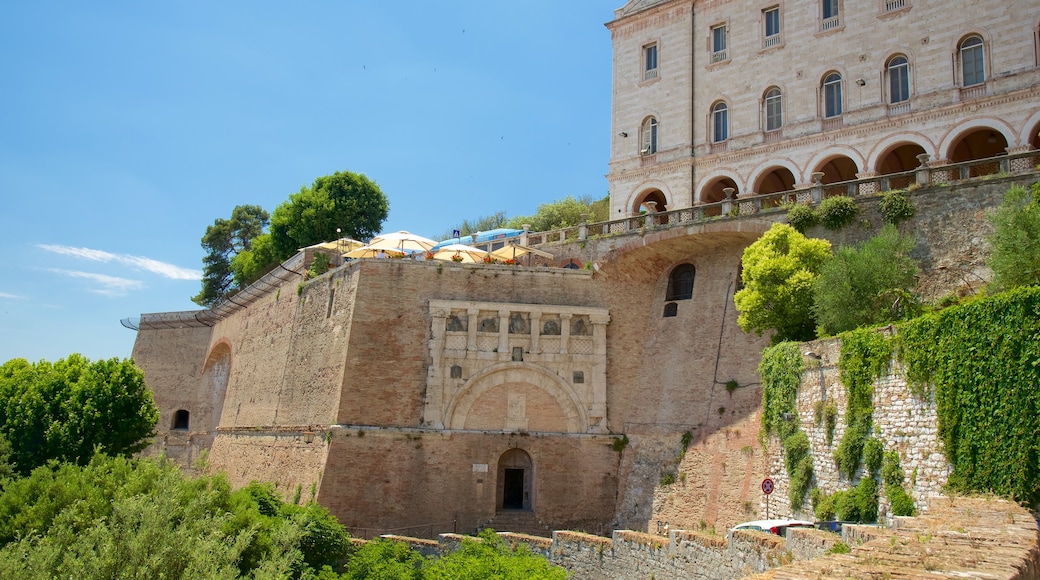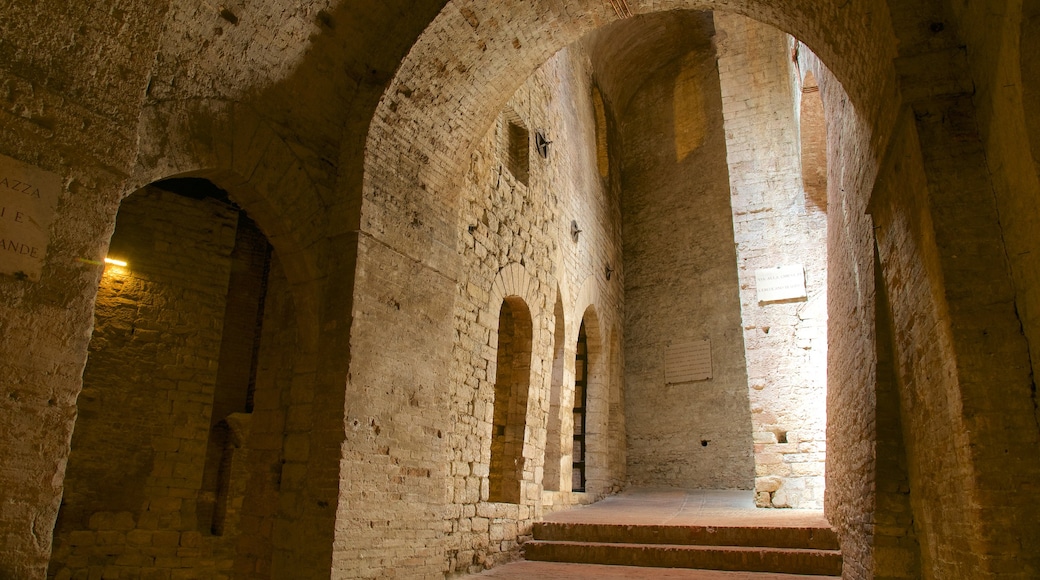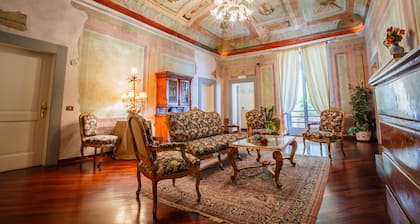Once a mighty fortress dominating the Perugia skyline, today Rocca Paolina is a fascinating remnant of the city’s past. Walk through the remains of the castle and find charming gardens and an exhibition center in this atmospheric setting.
Uncover the castle’s history in the Rocca Paolina Museum. The castle was built in 1540 under the instruction of Pope Paul III Farnese, who wanted to assert his dominion over a once-free city. Locals hated this symbol of papal control and had destroyed most of the castle by 1860.
Enter the fortress through Porta Marzia, an ancient gate from the 3rd century B.C. that was incorporated into the castle. This doorway marks the start of the Etruscan town walls of Perugia. Inspect the figures from Roman mythology carved into the gate.
Weave through the cool stone tunnels of the fortress’ foundations to experience what life was like in medieval Italy. The castle was built around Borgo San Giuliano, a wealthy neighborhood that was consumed by Rocca Paolina. See the streets of this historic district preserved beneath the fortress. Take escalators up through the center of the tunnels to emerge in Piazza Italia.
Attend an event in the CERP, also known as the Rocca Paolina Exhibition Center. In the past, the center has been used for photography galleries, musical performances and contemporary art exhibitions.
Climb to the top of the fortress to find the Carducci Gardens, where the poet Giosuè Carducci wrote his poem Il Canto dell’amore. Sit in the shade of the trees and take in panoramic views of the city below. Look for iconic buildings like the Palazzo dei Priori and the Cathedral of St. Lorenzo. Come here on the last Sunday of each month to take part in Perugia’s antique fair.
Ride one of several buses that travel to Piazza Italia, which is just outside the Rocca Paolina. The historic complex is free to enter and to explore on foot, although some exhibitions may come with an admission fee.














